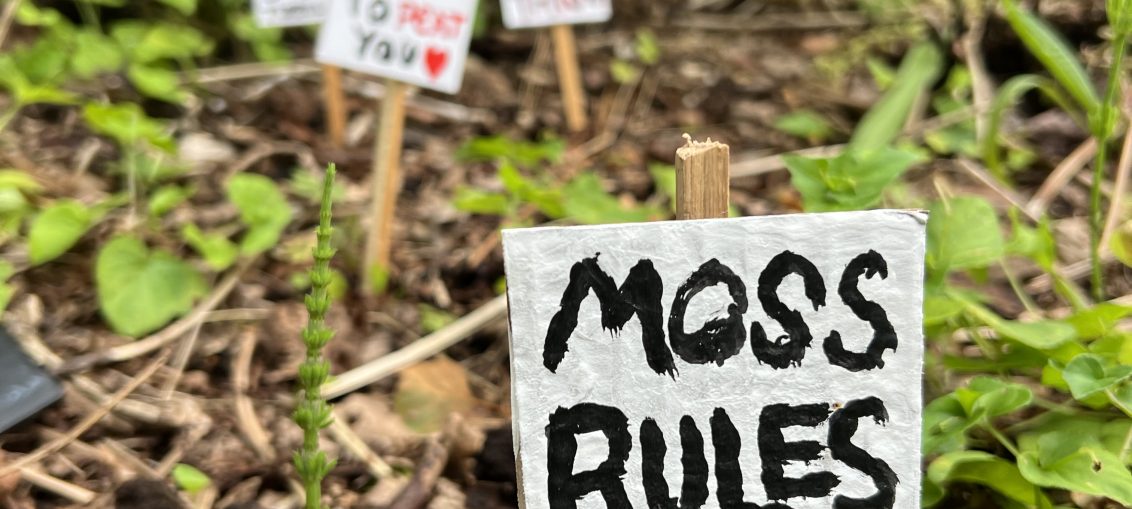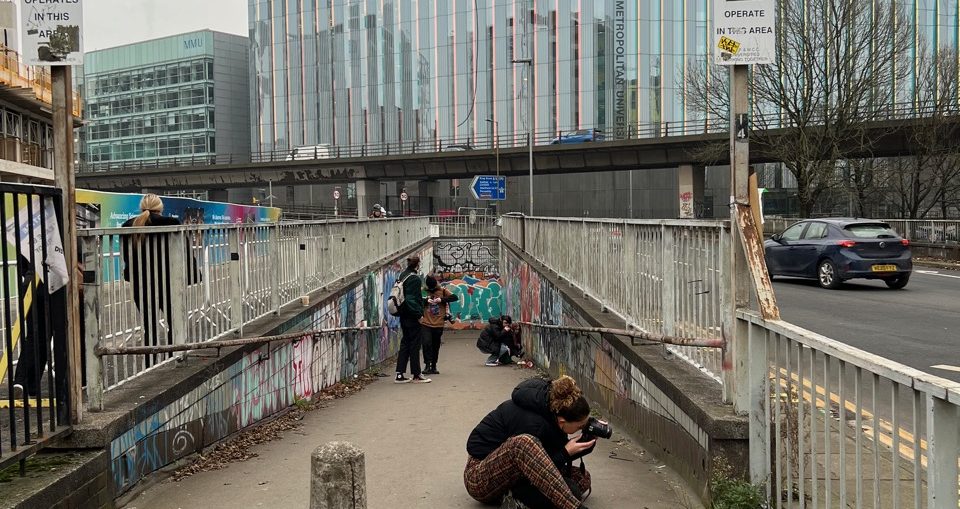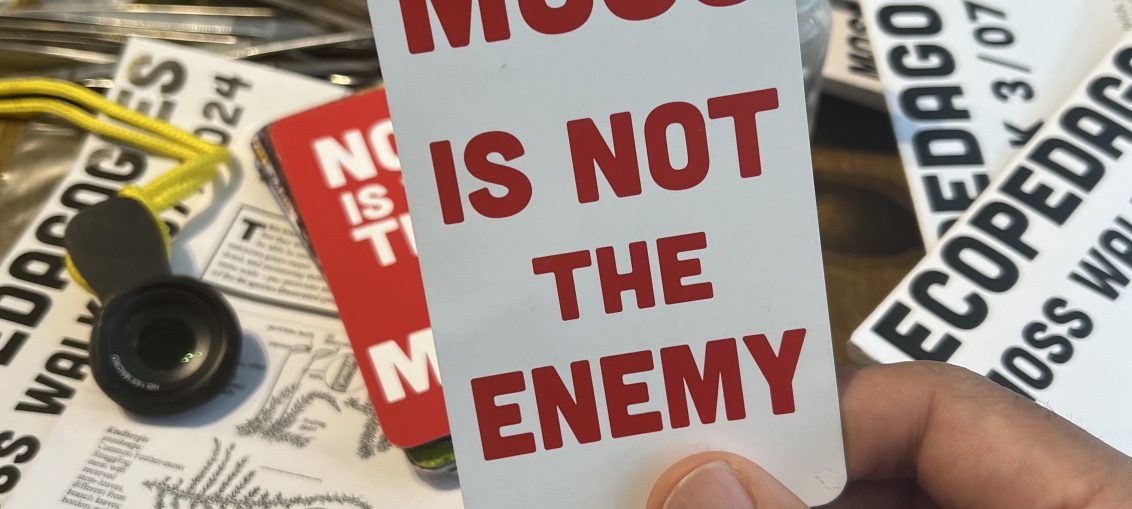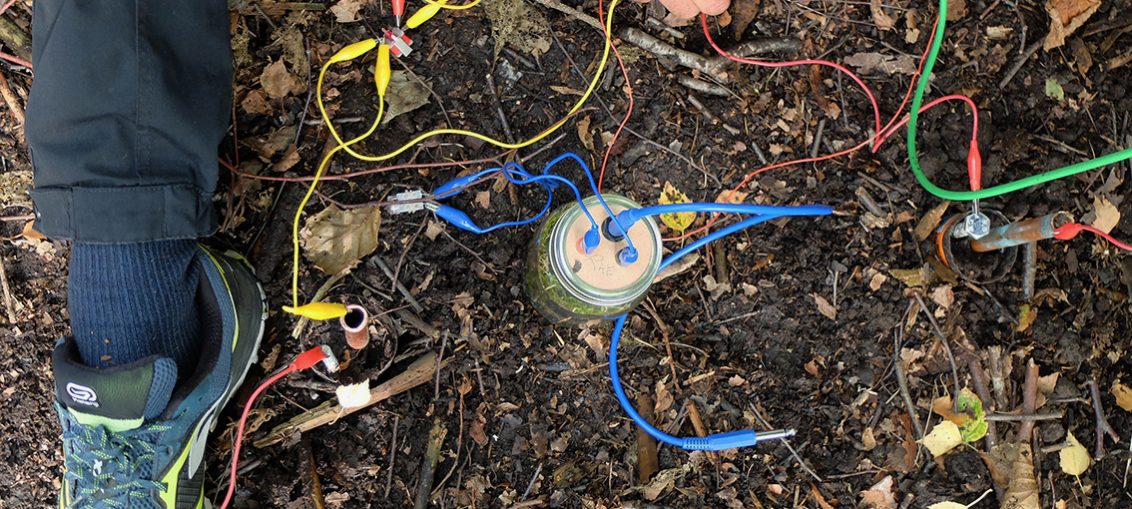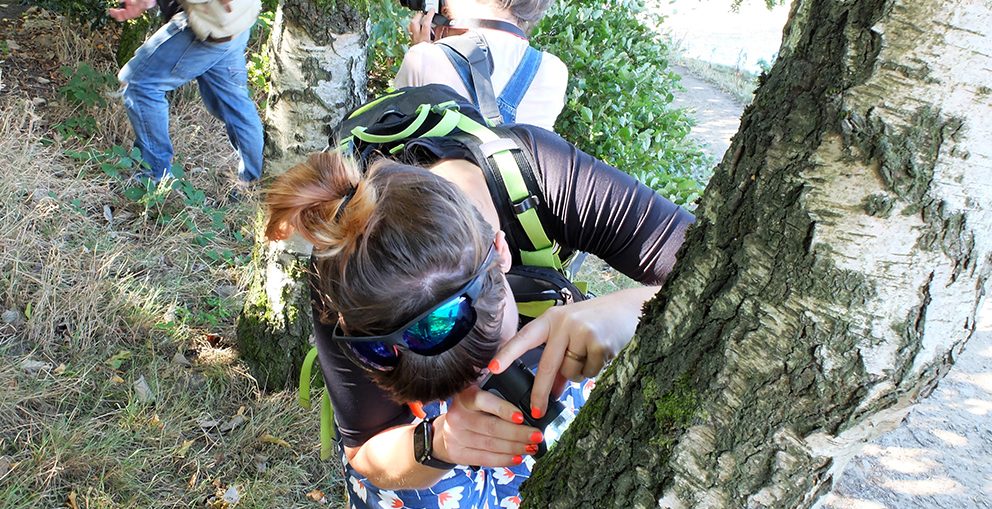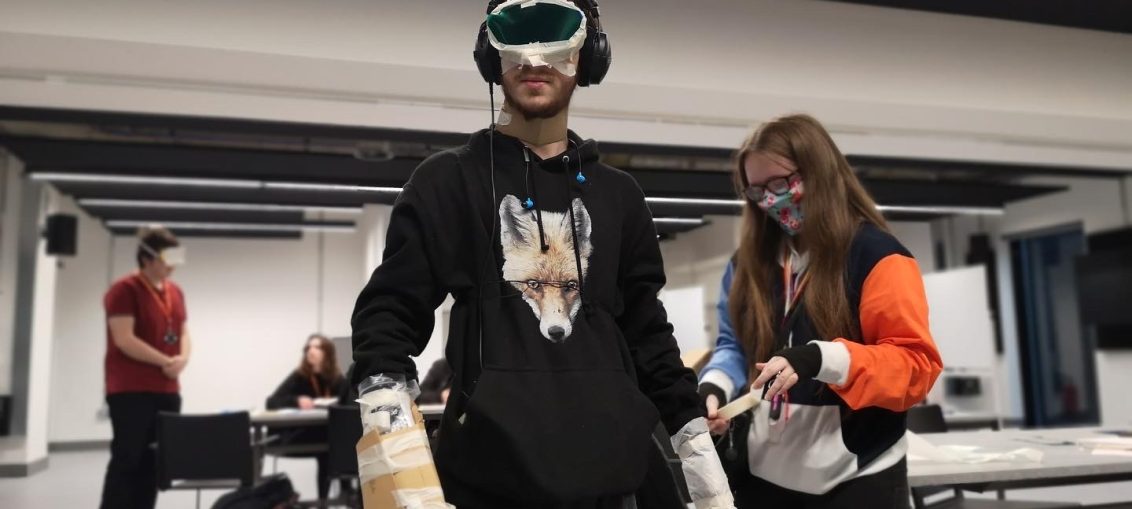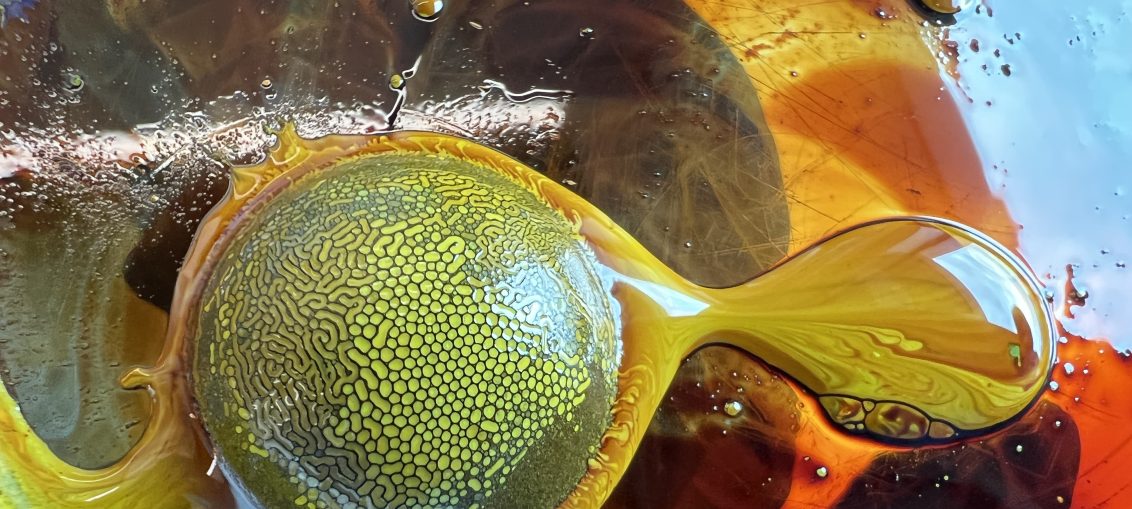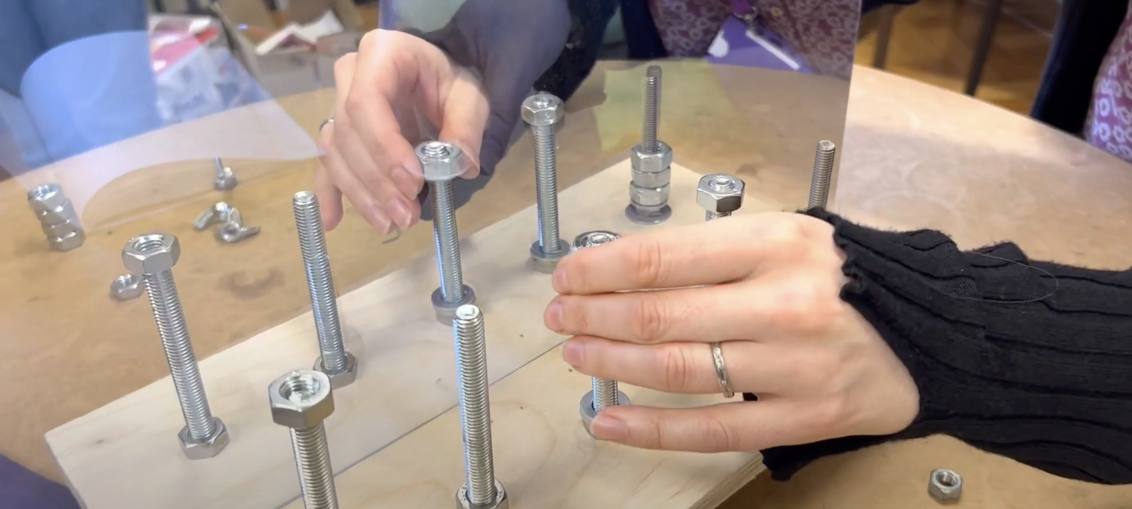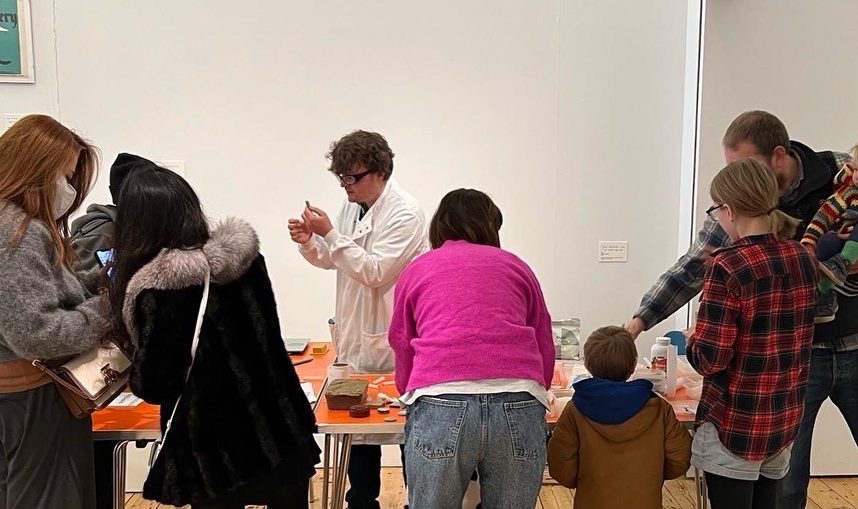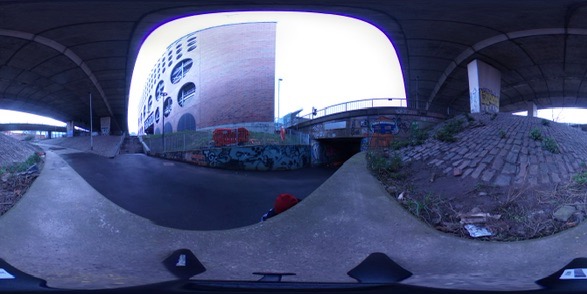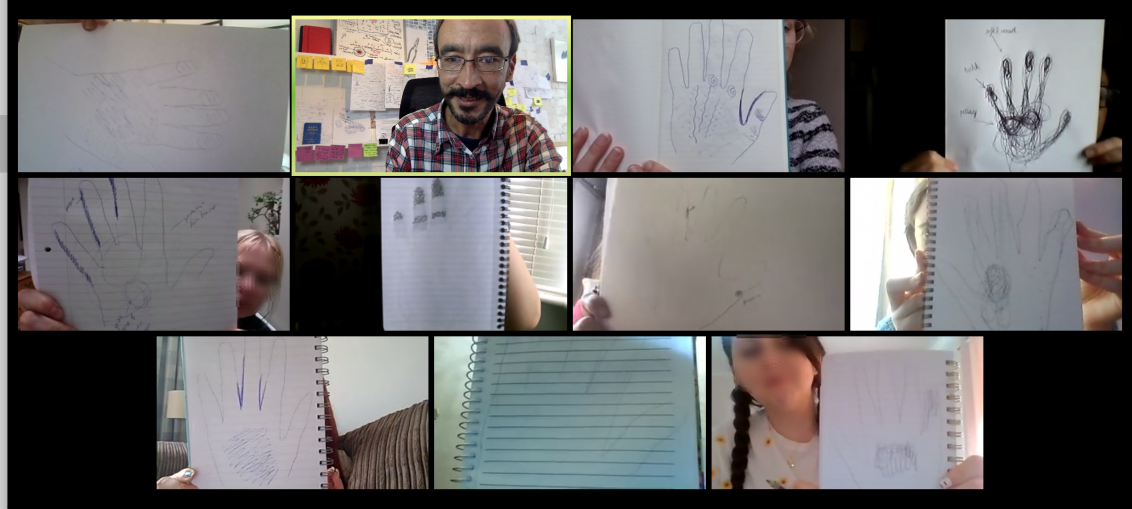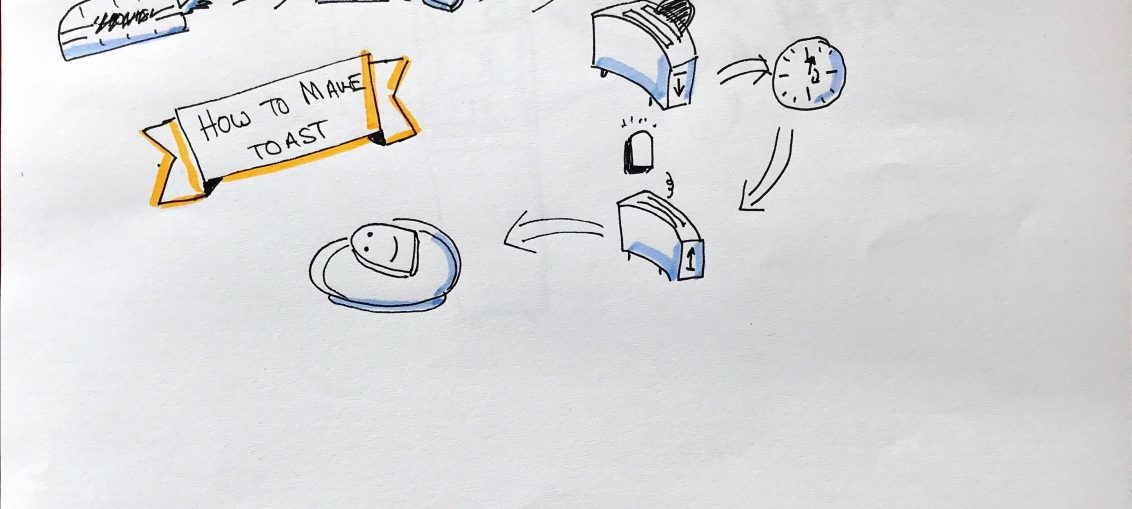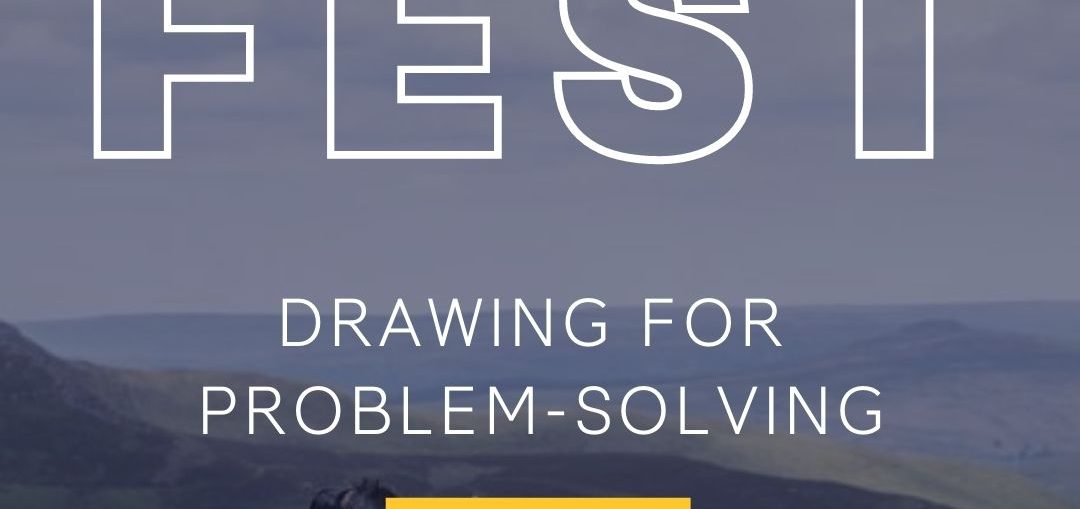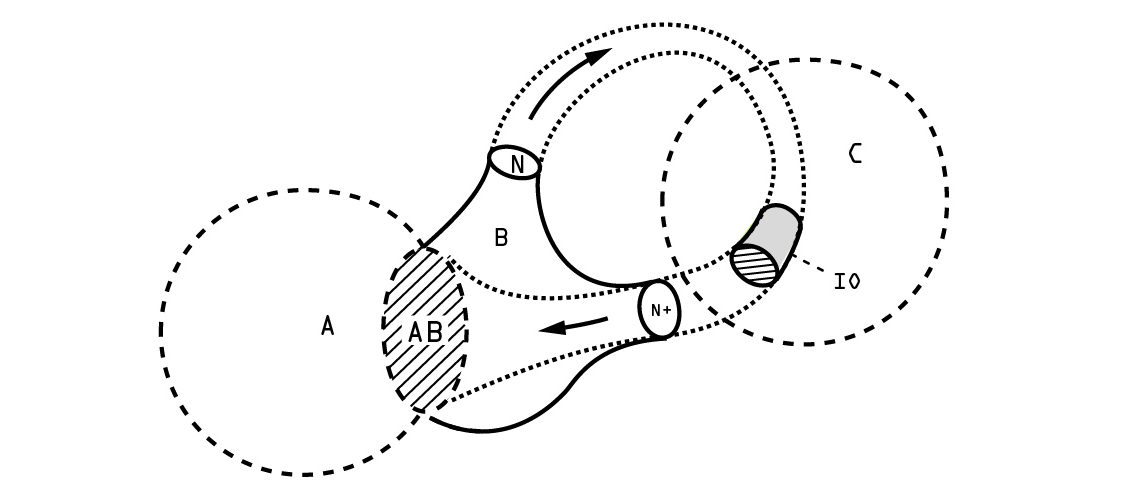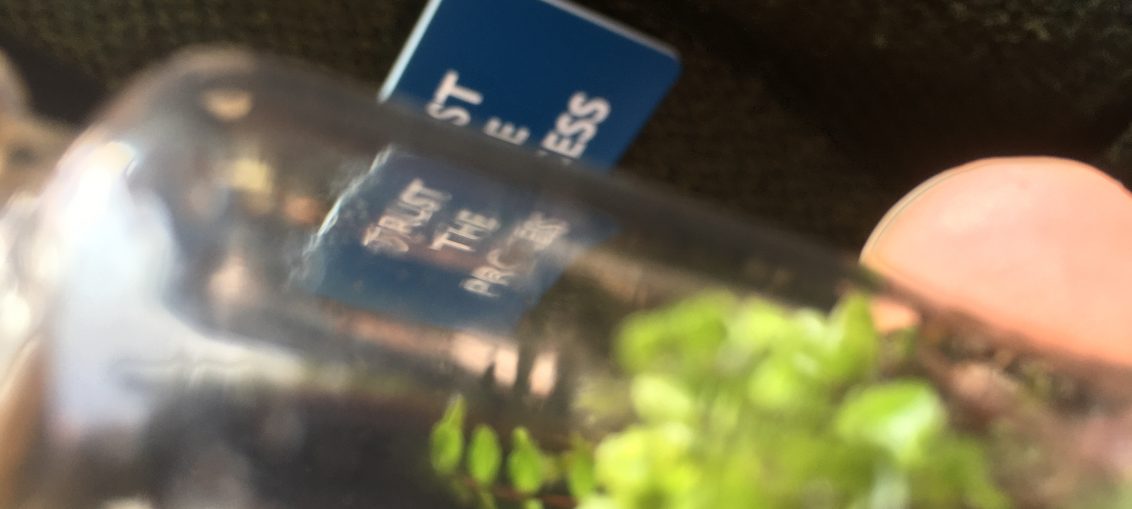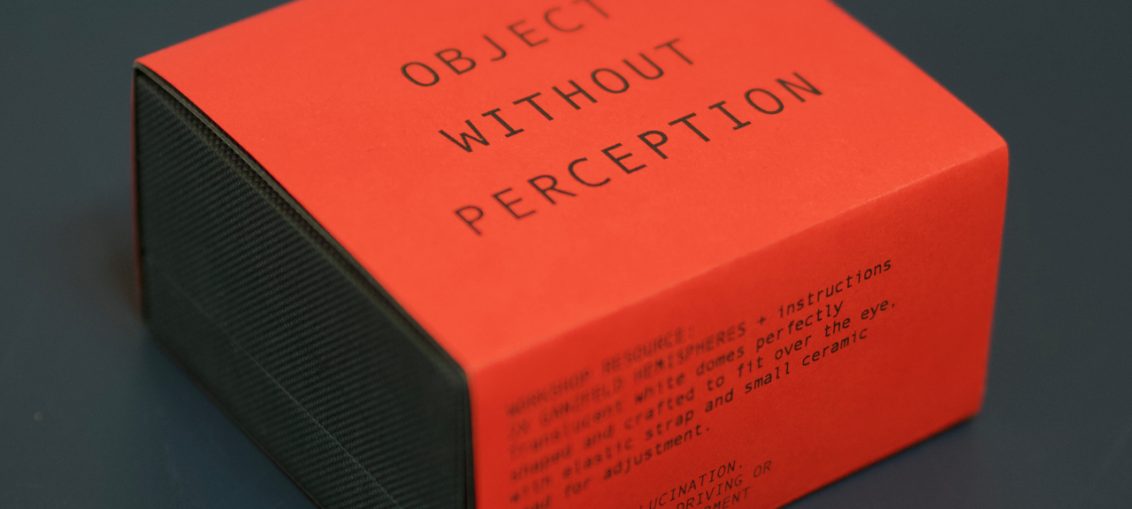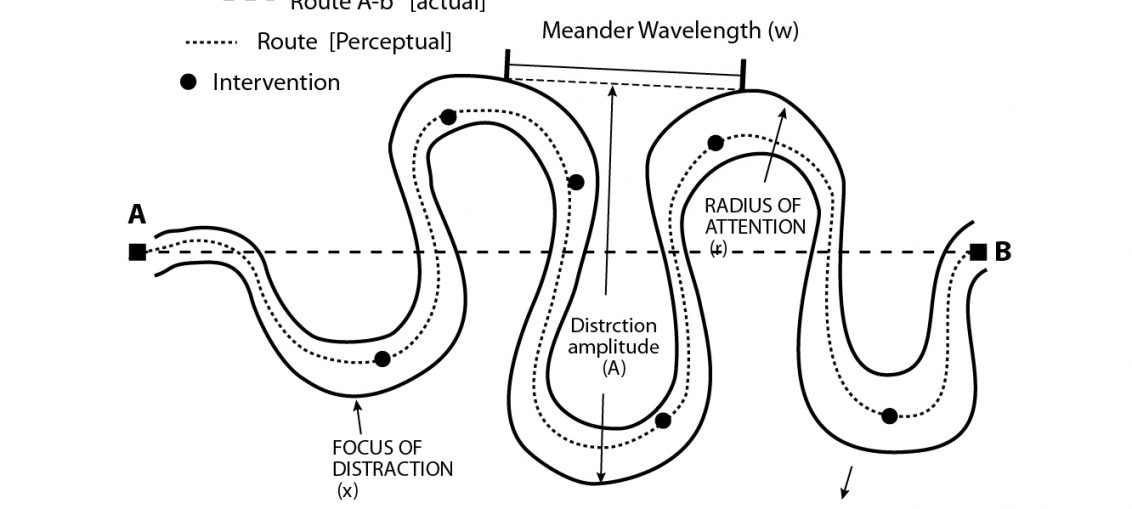The Micro-Protest Workshop explores the power of gentle protest through small, situated acts of resistance. Participants use a process of ‘diffractive mapping’* to co-create protest signs and slogans that draw on perspectives from ecology, art, and activism. Rather than large-scale statements, these micro-signs give voice to overlooked or more-than-human worlds, transforming protest into an exercise in empathetic imagination. Drawing on Corbett’s idea of gentle protest (Corbett, 2017) and the Situationist practice of détournement (Debord & Wolman, 1956), the workshop uses humour, play, and re-appropriation to show how media objects, even modest ones can disrupt dominant narratives and open space for critical reflection.
Tag: workshop
Moss workshop
The Moss workshop explores the overlooked ecologies of the city. Equipped with ecological ‘probe kits’, participants move slowly through the city exploring damp walls, gutters, and cracks, using microscopes and cameras to encounter mosses and other life forms, usually hidden from view. The process of looking closely and documenting these organisms invites reflection on the more-than-human world and the ways in which our tools; lenses, photographs, notes enhance our perceptions and mediate what we see and value. By shifting attention from fast, screen-based media to the intimate scale of moss, the workshop creates a space to question how visibility, evidence, and care are distributed across environments and societies. By combining hands-on ecology with reflective media practices, the moss workshop asks us to consider how slowing
Moss identification card deck
This card pack was developed for a moss walk for the Eco pedagogies Symposium 2024. The walk traced a route between the Firs Botanical Gardens and Manchester Museum. In this iteration of the moss workshop, I discussed my emerging "methodology of moss" and the role of art as a perception-changing device. To develop the card pack I photographed each species of moss I found along the route and created a card for each one, including information on the numerous biomes encountered. These cards not only aid my learning and memorisation of moss species but also include prompts, instructions, texts, and readings that will enable others to facilitate their own walking and moss workshops in the future.
Boundary Detector Workshop / Part – 2
17/09/2022 Second Workshop at Longdendale Environmental Centre as GUIDEline project with Glassball Studios: In this workshop, we continued to work on our boundary detectors; moss terrariums with carbon and aluminium layers which act as electrodes. In my test, I used moss growing on a carbon graphite felt layer (the anode), over a granular substrate of Zeolite (the electrolyte, but in the workshop, we used grit and mud collated from the boundary). The base of the jar is covered with aluminium foil (the cathode). As the moss photosynthesises and microbes do their thing - electrons are exchanged between the two electrodes generating electricity (more info on the science at end of this post). However, it is as yet unclear exactly how
Boundary Detectors workshop / Part – 1
1/09/2022 Workshop / Longdendale Environmental Centre / GUIDEline project with Glassball Studios: We met at Longdendale environmental centre for a day of walking and micro exploration, following a segment of the peak district boundary. The idea was to walk slowly, looking closely while collecting samples (microscopic creatures, plants, minerals, sounds), and explore how these things interact within the hypothetical space of the boundary space. Above: Image by Cora Glasser / Glassball Studios. We discussed 'boundary layers' the spaces or microenvironments existing on surfaces or between objects and the free-flowing stream of air (gasses, humidity) and light. Mosses exist at specific boundary layers, miniature forests which act like environmental bubbles, trapping moisture, and creating shelter. Moss and other small plants Algae, and Lichen
Mirror gaze experiment at British Science Festival 14th Sept.
Documentation from the Mirro Gazing workshop as part of the British Science Festival 14th Sept. The workshop was broken into 20min slots over the day and took place inside a black-out tent on the grounds of De Montfort University outside the gallery. View this post on Instagram A post shared by Dr. Antony Hall (@tonazoid) https://britishsciencefestival.org/event/seeing-is-believing/ Book Tickets here https://britishscienceassociation-tickets.ticketsolve.com/ticketbooth/shows/1173626542
Perception changing device workshop 2022
These workshops took place at the School of Digital Arts (SODA) as part of the 'Co-Lab' unit, which is intended to get students working collaboratively across disciplines (Game design/sound/future media/film/photography). The 'messy interface' brief asked students to address the complex interface between real and unreal. My workshop was designed to get students working together and thinking about how our senses interact and how we can hack, or creatively disrupt the sensory interface. We looked at the long history of perception-changing technologies; from the microscope to early VR experiments, and the many strategies both artists and scientists have used to disrupt these technologies. After exploring some perceptual illusions and discussing our experiences, participants designed their own multisensory experiments that restricted, augmented,
Ferrofluid Workshop
Highlights from a workshop using ferrofluids with young people as part of National Saturday Club for the Photography dept. at School of Digital Arts (SODA). Ferrofluid is a fascinating material with alien-like behaviours. We used macro lenses and experimented with moving magnets using a motor and adding inks and dyes with mesmerising results. If you are interested in this workshop please contact me info(at)antonyhall.net
24 hour Bioblitz, Highfield Country Park
Sunday 12th June 2022Highfield Country ParkDrop-in events between 10 - 10.30 pm. We need your help! A BioBlitz is an intensive collaborative race against the clock to document as many different living things in a defined area within 24 hours [from huge trees to microorganisms]. Join artists and scientists and other local nature enthusiasts at the Bee Sanctuary, Highfield Country Park. Learn about nature recording identifying plants and animals, and help contribute to scientific research. Bring your phone to take photos, download the iNaturalist app and make an account. Everything you record on the 12th of June in Highfield park will count towards our Bioblitz event database. Or just come along and explore Highfield and enjoy nature. 10 am to 4 pm:
Experience in action: Work in Progress
This page has some notes and background info on the activities and experiments we are employing for the Experience in Action project with Body Eyes and Movement (BEAM) Lab at the University of Manchester. As part of my PhD research, I ran a number of workshops on perceptual illusions (all inspired by research at BEAM Lab and conversations with Dr. Ellen Poliakoff who also acted as one of my PhD supervisors) . The workshops often used the Rubber Hand illusion (RHI) and its many variations as a starting point. I gave participants instructions and asked them to experiment with different stimuli materials and arrangements and devise new experiments of their own. I found that observing participants experimenting and playing with ideas,
Biomaterials and future cities
Manchester Art Gallery Easter workshops with Antony Hall and Aled Roberts 6-16/04/22 This was a series of 7 workshops at Manchester Art Gallery as part of the Field Station project. Aled Roberts is a material scientist developing bio-materials made from non-toxic waste products as alternatives to cement that can be used to capture carbon(or even as a building material on mars). Cement and concrete account for 8% of global greenhouse gas emissions. For comparison, the aviation industry accounts for 2.5%. In the workshop, we created and tested new bio-composite materials. Some super-strong materials were invented alongside many explosive failures. This was a fantastic workshop which engaged families, children and adults equally. Many great conversations were had in relation to climate change
BIOBLITZ – Platt Hall
Platt Hall and Garden Open Day Saturday 2nd April Field Station set up outside the wonderful Platt Hall as part of their open day. I invited people to take part in an intensive BIOBLITZ. That is, documenting all living things in the area, from trees to moss and microorganisms. We placed a series of quadrants [square metres] to see where the most biodiverse sites are around the building]. I shared techniques for hunting and documenting creatures and provided ID resources; microscopes and macro-lenses to get close-up views of what we found. All the results were logged throughout the day on iNaturalist. See https://uk.inaturalist.org/projects/field-station-bioblitz-at-platt-hall Images from the BioBitz at Platt Hall and some wildlife recording prep at Debdale park a few
Experience in Action
Notes on basic editing for 360 VR footage
Notes on basic editing of 360 footage from the Rico Theta V using iMovie from immersive experience workshop. Once your films are transferred from the Richo Theta V camera to your device in the app you have two ways to edit this footage. Firstly, using the app to do basic edits and upload directly to youtube, or importing the video to your phone or desktop and then editing it using Imovie or Premier. Here is a basic guide specifically for the Richo Theta V. Use the Theta + APP:The easiest way seems to be to use the Richo theta+ app to do basic edits. From the app., you can share directly to YouTube in 360 VR format. See Richo + tutorial here Export
Unfeasible object workshop at Manchester Science Park
Thu, 23 September 202110:00 – 14:00Location: Manchester Science Park, Bright Building, Pencroft Way, Manchester, M15 6GZV During this workshop, you will be guided through several activities and perceptual illusions to focus the senses before building objects for the ‘Clay Hand Experiment’ and the ‘Unfeasible Object’ experiment. The CHI is based on the Rubber hand illusion; only in the CHI and Unfeasible object experiments, participants build their own hand and other non-hand like objects rather than using a replica rubber hand. Using clay, it is possible to distort and manipulate the clay beyond the form of a hand and create different degrees of ‘unfeasible objects’ and attempt to embody these as part of our own body image. The workshop explores the possibility
para-lab report
para-lab invite you to join us as we come together to display and discuss a series of ongoing collaborations between artists and scientists. The report will be presented through artefacts accumulated from the process of collaboration, as well as workshops and a mini-symposium (free) registration on Eventbrite) to contextualise the work. The weekend acts as a marker along the path of long-term, open-ended collaborations and a platform for the participants and the public to get together in real life after so long operating only online. Open to the public: Rogue Project Space, Thursday 23rd September, 6 - 8Saturday 25th September, 11- 5, Sunday 26th September, 12 - 4.
para-lab : Materials Group workshop
Para-lab workshop 25th April with the Materials group. Material scientist Aled Roberts led a workshop based on his work exploring how new sustainable materials can be created from bio-based waste materials, potentially as a form of carbon capture. He brought some fascinating material samples one of which was created from bone powder, compressed and heated into a hard ivory-like substance that could be machined or sculpted into any shape. The idea of the workshop was to forage for materials in the urban environment, which could then be mashed up and mixed. We collected moss, orange peel tree sap. Aled brought a number of extra materials he had previously experimented with such as marmite baby powder, dried mealworms, and muscle growth powder. The materials were mashed up
Contouring the boundary – 35mm photographs
Results from the Photography experiments, taken during the Contouring the Boundary Photography walk with Alison Loyd and Glass ball studios
Electronic Taste Perception Experiment – Workshop
Materials: Arduino, electrical cables prototyping board cocktail glass [or other receptacles] 4mm copper tape, Water. Instruction: The diagrams give an outline of the electronic circuit required to create an electronic taste perception experiment in conjunction with the Arduino code. The circuit is created through the body via a fingertip and another electrode which is placed inside the glass, the circuit completed when the drink enters the mouth. The potentiometer adjusts the frequency of the signal which in theory can then simulate different kinds of taste. Notes: Experiment with different liquids and food types to see how the electrical signal augments different flavours. Note that foodstuffs with high moisture content are more effective such as a cucumber. The circuit could be easily modified to include
Drawing for problem-solving BEAM Lab UoM
It was interesting to do this workshop on drawing with a group of scientists especially a group of experimental psychologists. Many of the activities in the workshop are used in this field. These can be thought of as an alternative to the questionnaire - a form of visual assessment. The draw a person test is a classic example - but there are many more contemporary examples. Feedback from this workshop has resulted in an idea for another workshop 'Drawing everyday objects and thoughts' As there seems to be a need for a workshop to help people so get more confidence in drawing as a prerequisite to this workshop.
Drawing for problem-solving Bruntwood SciTech
[Above participants drawing of how to make toast] This was the first of the ‘Drawing for problem-solving’ workshops which took place as part of the Bruntwood SciTech's Reconnect Festival. It draws together a number of experiments from both science and art. that I use in my own work for research and as a perceptual tool. Thanks to all those who took part!
Drawing for problem-solving
Interface objects [IO]
Para-Lab moss collecting Meander
A walking workshop with para lab. I created this bottle with instructions and hand-drawn illustrations, a different one for each bottle. We walked around manchester and collected mosses from some unusual sites, the route took us through some back streets and along the canal. Finally, we stopped at 'Home' constructed bottle gardens while chatting and drinking coffee.
Walking workshop – Proximity / para lab
A meander workshop proposal written for Para Lab, in response to a walking workshop by Ann Carragher with Proximity collective The meander like the ‘bimble’ is a method of walking research characterised by its semi-‘aimless nature’. The intention is that the multisensory relaxed and ‘rhythmical’ nature of walking allows for ‘slow observation’ and enables the participants to make new connections with the environment and between the participants though the discussions and actions along the way. Crucial to the meander is A the extraction of materials [physical samples, data, ideas] from the environment; this action demands a counter focus which cuts into the otherwise aimlessness of the walk. And B, The creation of the Delta Object; the subsequent sorting
Object without perception: Obscurist edition
Another Object without perception workshop took place online in the form of the Obscurist edition [an extremely limited edition of 1] which included content designed especially for Wes Whites Wedding Ritual Project. A video was used during the workshop with flickering blue and white frames which provided the visual stimulus for the ganzfeld experience. Object without perception: Obscurist edition Object without perception: Obscurist edition Using the screen sharing facility of Zoom made for a strange intermittent, irregular flicker. Having run out of ganzfeld goggles I participated with my eyes closed.
Para Lab – Meander~Delta
On the 28th / 06/2020 para lab met up at Brunclough reservoir. Everyone was tasked with creating ’a device to test the material properties of a thing’. I produced an edition of 15 Meander~Delta objects [drawings and text contained within a petri dish] with which to collect things and make notes, I also brought a homemade tardigrade extractor [salad spinner]. The wind and rain on occasion proved to be too disrupting to do any detailed work – or too difficult even speak to each other… https://www.instagram.com/p/CB-3MrkllD6/?utm_source=ig_web_button_share_sheet https://www.instagram.com/p/CCBafc3F-2n/?utm_source=ig_web_button_share_sheet
Object Without Perception / Proximity / CV19 Edition 01/07/2020
This was the first of a series of virtual [zoom] workshops created as a response to social distancing and the CV19 epidemic. A workshop resource was created and posted to participants, who were also required to complete an online questionnaire before and during the workshop as a way to create psychometric profiles and also to collect results. Participants were also invited to leave feedback in the form of a product review. The Object without perception resource http://antonyhall.net/blog/product/object-without-perception-proximity-cv19-edition/ See the workshop details here... http://antonyhall.net/blog/product/object-without-perception-proximity-cv19-edition/ Bubbles of Perception Participant Profiles [results from online questionnaires] Ganzfeld experience in progress
Meandering and delta objects – walking as research
Meandering is an experiential research method enacted through walking in the natural [or urban] environment whist being tasked with a specific activity [collecting, experimenting, sampling the environment]. The aim is that this process may lead to new ideas and discussions which cause the participants to meander from the planned course of action and in doing so reveal alternative routes and different ways of looking. During the meander, notes are made, and the process is recorded; The sorting of residual material generated become a "Delta object" an archive of the event. Meander 1. To slowly wander from a given course. 2. (of a river or road) follow a winding course 3. a journey that has no particular direction: ~Delta 1. The accumulation and sorting of material as
Self-isolation
Ganzfeld Variations [Translucent paper cylinder method] From a series of workshop in the 'Experiments in Art and Perceptual Illusion' series, aimed at changing perceptions, heightening awareness, and ‘making strange’ of everyday experiences. Instructions for making: 1/ Cut section of greaseproof paper long enough to wrap around your head. 2/ Secure with tape to make a cylinder. 3/ Place overhead. You will sense the warmth of your own breath, and the loud sound of the paper near your ears. You will see colour and light but no detailed shapes. You will see the texture of the paper, but try to see beyond this. At first, this may feel claustrophobic [You might want to cut small holes for breathing or listening, but these should not
